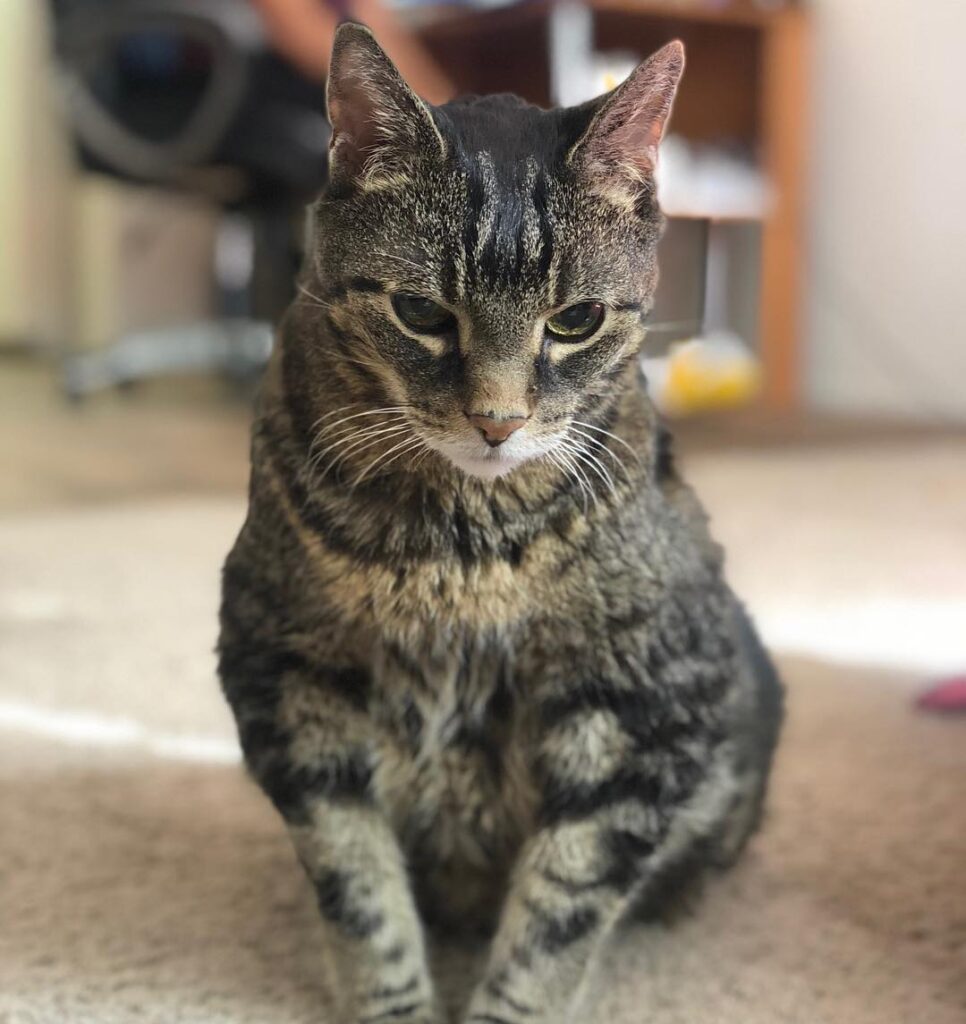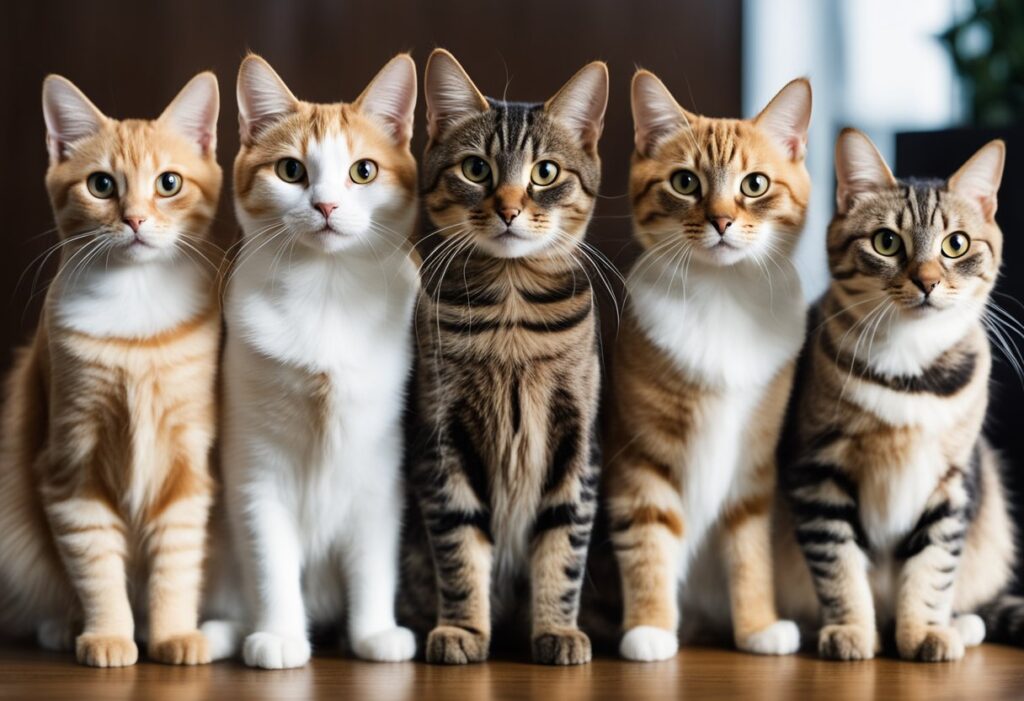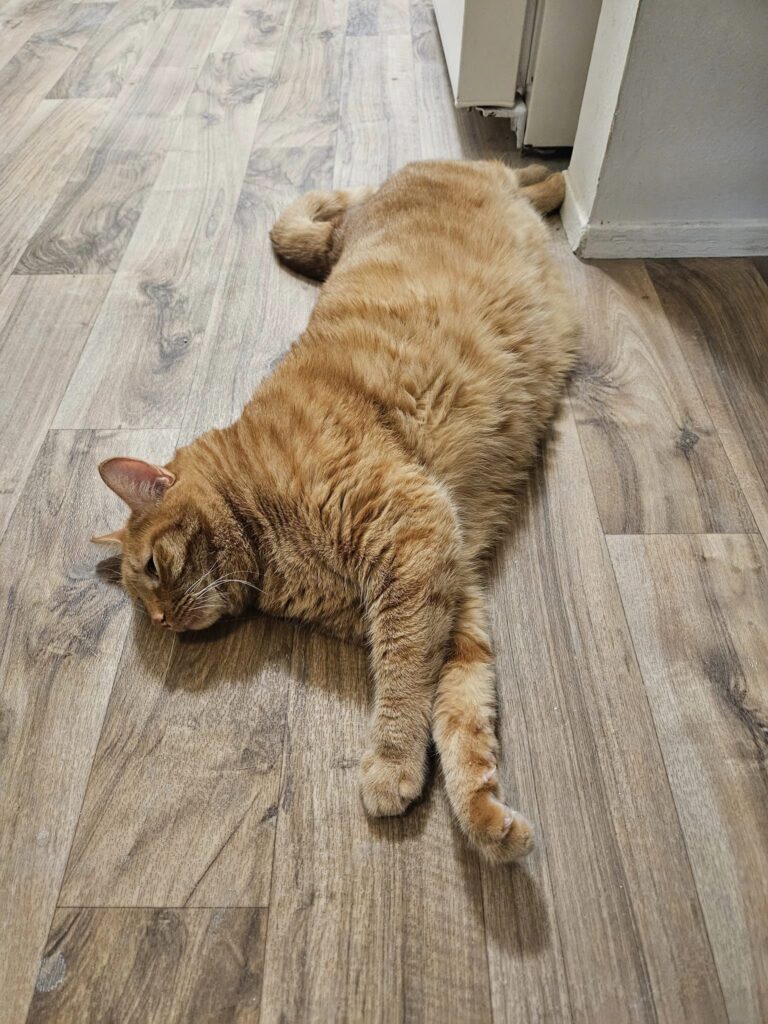If you’re a cat owner, you know that cats love to use their claws. They use them to scratch, climb, and play… and when they get a bit too playful and enthusiastic and scratch your furniture hard, it’s time to train them (gently) and with effective methods how to stop damaging your furniture and other items in the household.
If you’re looking for ways to get your cat to stop using their claws inappropriately, then you’ve come to the right place.
It’s super important to remember that cats don’t scratch out of malice; it’s a natural behavior for them. What we can do is redirect this behavior and teach them to use their claws in appropriate ways. In this article, I’ll share some tips and tricks that have worked for me and other cat owners to get cats to stop using their claws inappropriately.
Training Your Feline to Stop Using Claws

As a cat owner, you may be wondering how to train your cat to stop using their claws. Here are a few techniques that can help:
1. Positive Reinforcement Techniques
Positive reinforcement is a great way to train your cat to stop using their claws. When your cat uses their scratching post instead of your furniture, reward them with treats or praise.
This way, they’ll be encouraged to scratch their post since they’ll be trained to expect a reward.
Over time, your cat will learn that using the scratching post is a positive behavior that results in rewards.
2. Appropriate Scratching Alternatives
Cats need to scratch to maintain their claws, but you can provide them with appropriate scratching alternatives.
Invest in a sturdy scratching post and place it in a location that your cat likes to scratch. You can also try providing your cat with toys that are designed for scratching, such as cardboard scratchers.
Here’s a small lesson: I had one scratching post that the cats were using but they were still scratching the furniture. I bought two more and put them in their favorite spots. Guess what? They hardly ever scratch my furniture now!
3. Consistency and Patience in Training
Training your cat to stop using their claws requires consistency and patience. Be sure to provide your cat with appropriate scratching alternatives and reward them for using them consistently. It may take some time for your cat to learn the desired behavior, so be patient and consistent in your training. (No doubt, this is the hardest part).
By using positive reinforcement techniques, providing appropriate scratching alternatives, and being consistent and patient in your training, you can train your cat to stop using their claws on your furniture.
Cat-Friendly Home Design Is Important!

Another way to protect your home and furniture is by designing it with your cat in mind.
For example, you can choose furniture made from scratch-resistant materials like leather or microfiber. You can also choose furniture with rounded edges to prevent your cat from scratching.
Regular Claw Maintenance Is a Must!
Regular claw maintenance is essential to keep your cat’s claws healthy and prevent them from scratching your furniture. You can trim your cat’s nails every two weeks using a pair of clippers or a nail grinder but please take them to a professional if you have never clipped their nails before. (If you cut too much, this can result in dangerous bleeding and will need a visit to the vet!)
Another option is to provide your cat with multiple scratching posts or pads. These will give your cat an appropriate place to scratch and help them maintain healthy claws.
Understanding Why Clawing Happens

In this section, I will discuss the natural instincts and needs of cats that drive them to claw, how cats use clawing to communicate, and the factors that influence claw use.
Natural Instincts and Needs
Cats are natural scratchers, and clawing is a normal and necessary behavior for them. Cats need to scratch to maintain the health of their nails and to remove old sheaths, exposing new, sharp claws. In addition to nail maintenance, clawing allows cats to stretch and exercise their muscles.
Communication Through Clawing
Cats also use clawing as a form of communication. By scratching, they leave visual and olfactory marks that signal their presence to other cats. Scratching is also a way for cats to mark their territory and establish boundaries.
Not only that, but my cats stretch and claw against certain parts of the couch (without using their nails to dig into the furniture) that they are relaxed and ready to play with me as well!
Factors Influencing Claw Use
Young cats and kittens tend to be more active and playful and may scratch more frequently. Some breeds, such as Siamese and Burmese, are more prone to scratching than others. A cat’s personality and temperament can also play a role in their clawing behavior.
Also, pay attention to the environment because a cat’s environment can also impact their claw use. Cats that are kept indoors may scratch more frequently due to boredom or lack of stimulation. Providing your cat with a scratching post or other appropriate scratching surface can help redirect their clawing behavior away from furniture and other household items.
By understanding why cats claw and the factors that influence their behavior, you can take steps to manage and redirect this behavior in a positive and appropriate way.
How can you train a cat to retract its claws during play?

One effective method for training a cat to retract its claws during play is to use positive reinforcement.
This can be done by rewarding the cat with treats or praise when it plays without using its claws. It is also important to provide the cat with appropriate toys and scratching posts to redirect its natural desire to scratch.
What methods are effective for teaching kittens to control their claw use?
Kittens can be taught to control their claw use through gentle play and positive reinforcement. It is important to avoid rough play that encourages scratching and to reward the kitten when it plays without using its claws. Providing appropriate toys and scratching posts can also help redirect the kitten’s natural desire to scratch.
Why do cats unsheathe their claws while being petted and how can this be managed?
Cats unsheathe their claws while being petted as a natural response to being touched. This behavior can be managed by providing the cat with appropriate scratching posts to redirect its desire to scratch, and by gently discouraging the behavior when it occurs. It is important to avoid punishing the cat, as this can lead to fear and aggression.
What are the best strategies for reducing the sharpness of a cat’s claws?
The best strategies for reducing the sharpness of a cat’s claws include regular trimming, providing appropriate scratching posts, and using nail caps or covers.
Do not declaw your cat, as this is a painful and traumatic procedure that can lead to long-term health problems.
Can behavioral techniques prevent cats from using their claws when interacting with other cats?

Behavioral techniques such as positive reinforcement and redirection can be effective in preventing cats from using their claws when interacting with other cats. Providing appropriate toys and scratching posts can help redirect the cat’s natural desire to scratch, and rewarding the cat for playing without using its claws can reinforce positive behavior.
At what age do kittens typically learn to control their claws and how can this be encouraged?
Kittens typically learn to control their claws between 8 and 12 weeks of age.
This can be encouraged through gentle play and positive reinforcement, as well as providing appropriate toys and scratching posts to redirect the kitten’s natural desire to scratch.
Lastly, avoid rough play that encourages scratching, and to reward the kitten when it plays without using its claws.
